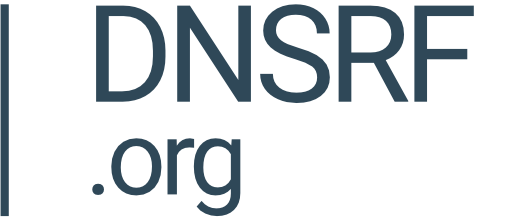What to look out for in the Zero-Draft of the Global Digital Compact?
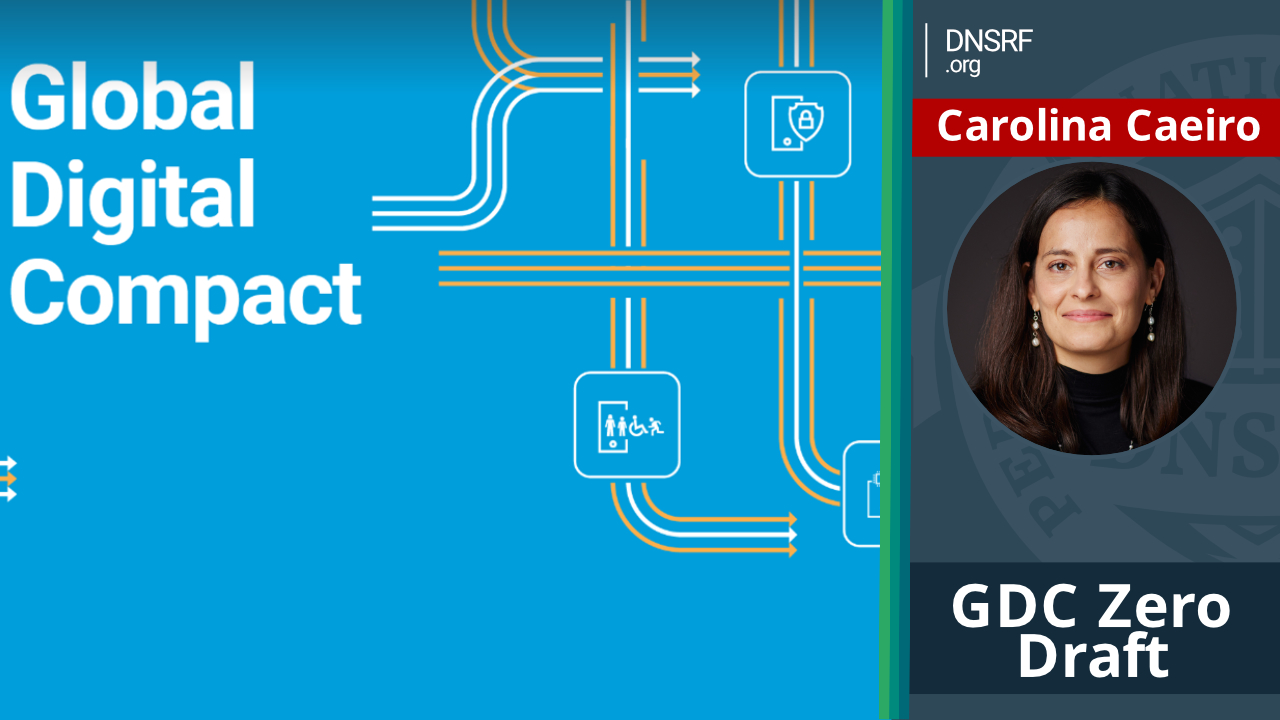
By Carolina Caeiro
The long-awaited zero draft of the Global Digital Compact (GDC) was published today, three days ahead of its first public reading programmed for April 5, 2024.
The GDC is an effort promoted by António Guterres, the UN Secretary General. The process has been branded as an effort to establish principles, objectives and actions to achieve “an open, free, secure and human-centred digital future.”
Over two and half years since the GDC was first proposed in 2021, the draft sets off the last stage of the process leading to the Summit of the Future in September 2024. Marking the closing of its open consultations phase, the draft will now be finalised through intergovernmental negotiations.
The Internet plays a central role in the GDC’s vision for a digital future. As a result, the process has been tracked with special attention –if not concern– by the multistakeholder, internet community.
The GDC issued a first call for written submissions in 2023. This article reviews what we learned from them, and what to look for in the zero draft of the GDC published today to ensure community feedback has been taken onboard.
The GDC: the context
In the recent UNESCO Digital Transformation Dialogue of March 6, 2024, the UN Secretary General's Envoy on Technology described the GDC as an effort to “facilitate digital cooperation at a time of fierce digital competition.” The language acknowledges both the geopolitics of the global technology race and concerns over the private sector’s unchecked power in developing future technologies.
At the meeting, the spokesperson for the Tech Envoy emphasised Guterres’ determination to have the GDC be one of the five to six agreements to emerge from the Summit of the Future.
The GDC’s vision is indeed a positive one: ensuring that human development is placed at the centre of the global digital agenda. The means, however, were viewed with concern by the multistakeholder community which favours open, cross-sector Internet and technology governance. Non-state actors worried their voice would not be adequately heard, as consultation processes often act as a box-checking exercise.
Governments supportive of the GDC and sister UN agencies alike also warned against duplicating efforts already undertaken by the World Summit of the Information Society (WSIS).
Through much effort and hard work, the WSIS process has successfully delivered international agreement and cooperation on global digital governance. For example, a recent report by the DNSRF has found that the WSIS-facilitated Internet Governance Forum (IGF) has delivered great value to the international, multistakeholder community, particularly the Global South.
The Tech Envoy’s online consultations held through April 2023 offer valuable insights into what the global technology governance community expects from the GDC.
The following section draws from the DNSRF’s analysis of 177 publically available submissions. Insights are derived from the automated analysis of submissions using the DNSRF’s Data Analytics Platform (DAP.LIVE) which identified: (a) geographic and stakeholder origin of submissions, and (b) top themes using and AI-enhanced large-scale text analysis techniques
What did we learn from the submissions to the Global Digital Compact?
Global North led over Global South in total number of contributions. The submissions to the GDC open consultation came primarily from individuals or organisations representing country-specific perspectives (46.3%), followed by submissions identified as global (42.9%) and regional (10.7%).
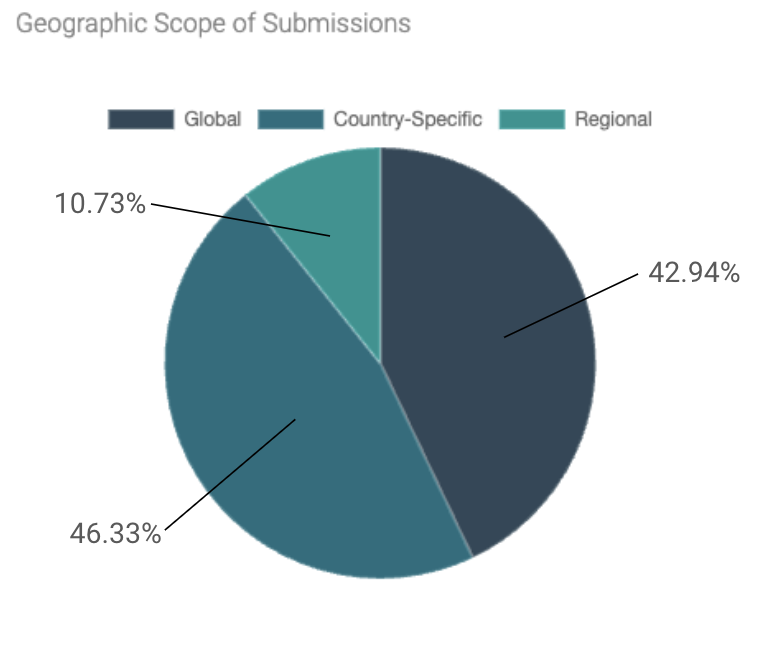
Honing in on those proposals coming from specific regions or countries, only 40.6% of the submissions came from the Global South. Asia-Pacific led on Global South contributions, followed by Latin America and the Caribbean, and then Africa. The largest number of geographic-specific contributions came from first Europe and second, North America. Representation from the Global South is even lower when factoring in global submissions of organisations based in the Global North.
Global South representation continues to be a challenge in consultation processes, even when touted as an opportunity for Global South countries to voice their needs and prerogatives. This limited participation speaks to a marked need to reduce duplicative processes that dissipate the attention and ability of resource-constrained countries to meaningfully participate in global governance.
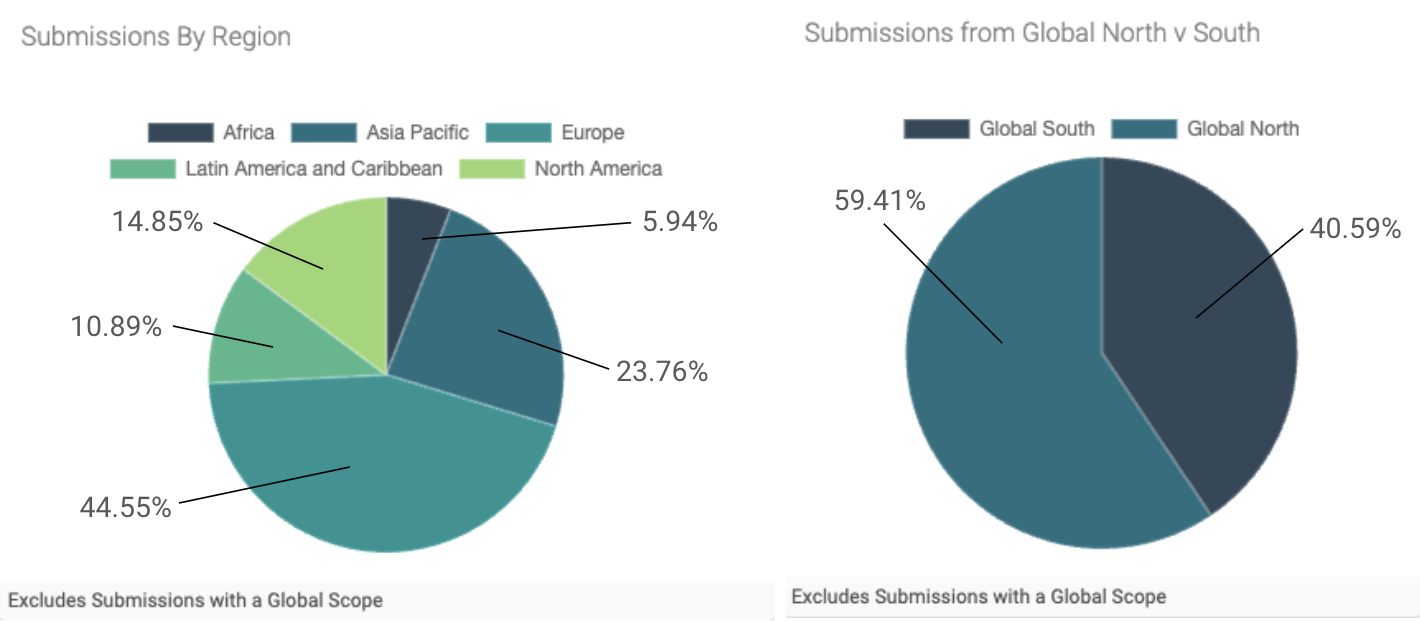
Good stakeholder spread, with notable participation from governments and multistakeholder groups. Taking into account traditional stakeholder groupings –as commonly observed in UN consultations– civil society and academia were the leading contributors to the process (44.63%). Government submissions, including IGO, followed next (20,90%) with “Other types of entities” coming in third, composed primarily of multistakeholder bodies such as National and Regional IGFs (18,64%). When honing in on Global South submissions, academia and civil society are the leading stakeholder groups submitting responses to the consultation. In the case of North America, private companies led the way. Technical community and Private sector had similar percentages of submissions (7.34% and 8.47% respectively).
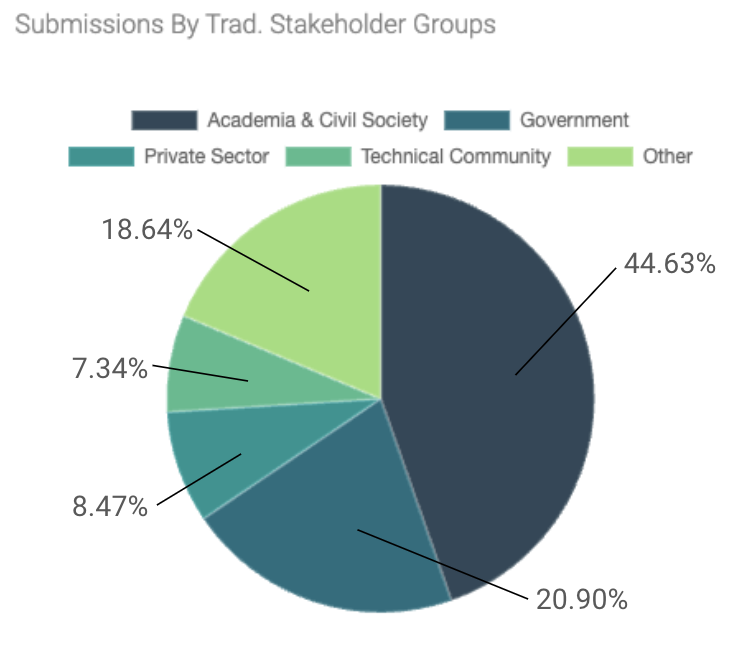
These findings are consistent with those published by Konstantinos Komaitis and auDA, even though the analyses have taken different organising principles.
The Top Themes. The GDC requested submissions across 8 areas of interest: (i) connectivity; (ii) internet fragmentation; (iii) data protection; (iv) human rights online; (v) online content; (vi) AI regulation; (vii) digital commons and (viii) other. But beyond these pre-established issue areas, greater nuance emerges from the thematic and source analysis of submissions, particularly looking at the top issues of concern.
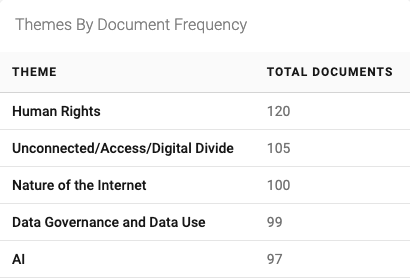
The DNSRF’s large scale text analysis revealed that the leading theme emerging in the contributions is human rights. Taking a human rights approach to digital governance was the focus of, not only civil society organisations, but of stakeholders across the board, including Intergovernmental organisations (such as UNESCO, UNICEF and OHCHR), Governments (Netherlands, Austria, Australia) and Private Companies (Microsoft, Meta and the International Chamber of Commerce).
The second emerging theme –a well known area of focus of the existing Internet Governance Forum– is connecting the unconnected. In considering the global digital future, the community has highlighted once again the need to take care of the basics: bringing online that one third of the global population that remains off the Internet, particularly in the Global South.
Language referring to the open, interoperable nature of the Internet was the third theme to emerge in the analysis with over half of the submissions raising the importance of protecting perhaps one of the central drivers of the digital revolution: global connectivity.
Support for the IGF comes across transversally in submissions on these three leading themes, particularly in light of proposals to launch a parallel digital cooperation forum.
Data governance and Artificial intelligence complete the top five themes of the GDC submissions, highlighting concerns with how data is used, how it flows across borders, and how it powers the development of AI solutions. Again, clear points of concern are the role of Global South in data and AI governance and whether benefits of the data revolution will reach global regions equitably.
Honing in on submissions from specific regions reveals that different regions have different priorities.
Contributions from Latin America and the Caribbean discuss primarily human rights, digital public goods and Internet access. Asia-Pacific shares concerns on human rights and internet access, though data governance also emerges as a top area of concern. In the case of Africa, human rights lead the way, though questions relating to the digital gap, as well as security and trust also feature as the top three priorities.
Contributions from North America are particularly concerned with cooperation strategies and governance, whereas Europe gives greater centrality to human rights, AI governance, and Internet access, indicating European contributions are more closely aligned with those of the Global South.
Chinese organisations and the government contributed with 7 submissions. These highlight primarily aspects that resonate with the Global South: connecting the unconnected and developing country agendas. Digital technologies, including AI, and cybersecurity emerge also as leading considerations.

What to look out for in the zero draft?
Some key messages from the contributions emerge loud and clear:
First, support for multistakeholderism as a form of governance for anything digital. This is especially true of the governance of the Internet, which has delivered innovation and uptake throughout the world. This comes hand in hand with support for the hard-won agreements of the WSIS process, and the work of the IGF.
Second, staunch commitment for protecting the global interoperable nature of the internet.
Third, shared agreement for the importance of expanding global connectivity.
And fourth, common concerns for data and AI governance, and how to devise processes that take forth lessons from digital governance without stifling innovation.
The GDC offers an opportunity for stocktaking and for further strengthening action on these agreements for a joint digital future. To ensure multistakeholder feedback has been taken onboard, these four critical elements should be adequately addressed in any future version of the agreed text going into the Summit of the Future.

